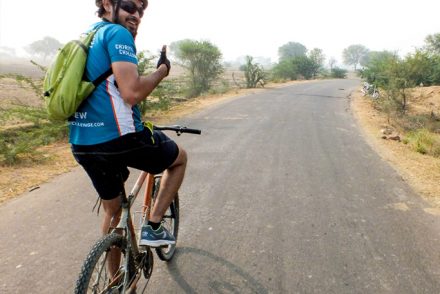
You’ve done the hard part – signed up for a challenge, gathered your team and kickstarted your fundraising. The next hurdle is what to wear… I can hear my mum saying, “it’s not a fashion show!” Whilst she may be right, it is important to wear comfortable, durable and appropriate kit for your challenge day.
It can be very overwhelming to know where to start with kit, and what is right for your challenge. Here are some tips and things to consider from our experienced team:
Weather

The Girlguiding slogan “be prepared” comes in handy here! In being prepared for most eventualities when it comes to weather will quash chances of discomfort and contribute to a greater challenge success rate. Making sure to keep your kit light means you can keep several options with you whilst on your challenge, should the weather change unpredictably (especially on a UK challenge…).
If your challenge is mountainous, it’s important to acknowledge that the temperature and climate will be different at the base and the summit. Cloud cover can signify rain or snow, but could also mean a bright blue sky at the top. Having extra layers, preferably waterproof, reduces the risk of getting chilly at the top, or being limited for what to take off whilst climbing. You’ll also undoubtedly work up a sweat whilst climbing hundreds of metres of elevation, despite sometimes colder temperatures. This sweat will cool inevitably on the way back down as you exert less energy, so those extra layers you previously shed will come in handy. We lose most of our important body heat through our extremities (hands, feet, head) so packing thermal gloves and a woolly hat is a good shout for the colder months. Your Charity Challenge buff will be the perfect active scarf…
Alternatively, in the warmer climates and hotter months, protecting your head and neck from sunstroke is essential, with a legionnaire’s hat or a bucket hat. You may be trekking through a humid jungle where layers aren’t always appropriate. Wearing light-weight breathable gear in light colours can help prevent aforementioned heatstroke. It’s a knee-jerk reaction to choose sleeveless or short-sleeved tops in this weather but consider bug bites and sharp foliage.
Comfort

Being uncomfortable in your clothing, both mentally and physically, can greatly impact your productivity and enjoyment on the challenge. Are your shorts too short? The extra fleece was just one too many? Do you need thicker socks? It’s important to feel confident and powerful whilst in your gear, as challenges can be as much of a mental challenge as a physical one. The best way to tackle this, and understand what works best for you, is to wear your gear as much as possible prior to departure. Yes – you may look a little silly hiking down your local high street on a Saturday, but you’ll feel like a pro on the challenge! Through this process of trial and error, you will inevitably feel more trusting in your own ability to smash the challenge, and infinitely less self-conscious.
Shoes are a massive factor in challenge comfort. The dreaded ‘B word’ (blisters!) can be ultimately destructive to your challenge experience. It is vital that your shoes are well worn in and appropriate for the terrain. We highly recommend that you go into an outdoor shop for a fitting of both your hiking boots and socks. It is so important that the correct size, type or brand has been chosen for your foot shape and the event you are taking part in.
Whilst newer editions of trail shoes (that look similar to gym shoes and trainers than hiking boots) are fantastic for shorter, more predictable walks, they aren’t always suitable for mountain climbs and challenges. The lack of ankle support can contribute to injury and soreness, and the soft soles are great on hard ground, but don’t adapt as well on rocky/gravel laden mountain paths.
Durability

It’s no surprise that good quality outdoor equipment can be unreasonably expensive, and the market is oversaturated with new gadgets and techy bits promised to ensure your comfort. If you’re not the adventurous type, and are unlikely to use the equipment again, we’d recommend buying second hand equipment or renting your gear from our partner Outdoorhire. This way, you can experience some great quality durable kit that will support you through your challenge without having to fork out, or hoard unnecessary gear.
If you’re an outdoorsy person, however, kit can make or break your experience. Investing in high quality performance gear will not only make your experience better, but the equipment will last for a long time – which is always nice to hear in this over-consumption era we’re in. Whether you’re climbing up and down the Seven Sisters’ cliffs in Sussex, or summitting Ben Nevis, your kit and clothing should be the last of your concerns!
Luggage and Packing

Your main luggage bag should be a holdall/duffel bag rather than a suitcase, this makes it easier to transport in the buses as they are more malleable. We recommend to keep your luggage to a maximum of 15kg, so don’t overpack! You will need to be able to carry your bags on and off transport to the accommodation/campgrounds, so a comfortable bag that is able to be carried is essential.
A useful tip for packing is to compartmentalise your clothing and you can use dry bags or zip lock bags to do this. For example, you could have a bag for underwear and socks; and another for t-shirts and pyjamas. The important thing is to not over pack and lay things out so you can see everything in one go. Make sure you have everything you need, then if you have space, add some additional things.
You will also need a day sack which you can take as your hand luggage on the plane and use for the items you’ll need each day on the challenge. Your day sack should have a thick waist strap for maximum comfort. Other things to consider are back ventilation, hydration compatibility and gear loops for stowing walking poles. Waterproof liners or bags are essential for keeping valuables and clothes dry within your pack. Portable chargers or power banks containing a lithium ion battery must be packed in carry-on bags. Specific regulations regarding power banks may vary depending on the airline, the country you’re traveling to, and the type and capacity of the power bank. It’s always a good idea to check with the airline and the destination country’s regulations before your flight to ensure that you comply with their specific rules regarding power banks.

Participant discounts
As a Charity Challenge participant, you will get members only benefits and discounts at a wide range of clothing and equipment suppliers including Outdoorhire, Cotswold Outdoor, Runners Needs, Snow + Rock, Water to Go, The Altitude Centre, Sporttape and Nomad & MASTA. Check out the Clothing and Equipment section in your account area for more information.
Learn more about our clothing and equipment partners here





No Comments